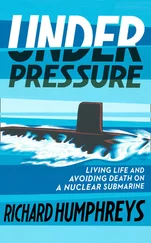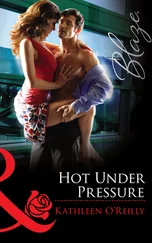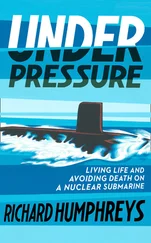1 ...7 8 9 11 12 13 ...17 The RED–BLUE tool is all about being comfortable being uncomfortable. Under pressure, do we give up or rise up? As someone wise once said: ‘Pain is inevitable. Suffering is optional.’
THE HUMAN BRAIN
Structure & function
The brainstem and limbic system connect primarily with the right hemisphere to provide emotional regulation, operating through images, feelings and direct experience (RED). The left hemisphere operates through language, logic and reflection (BLUE).
CHAPTER 3
Chapter 3, Balanced Brain vs Unbalanced Brain
Our emotional regulation system sits at the heart of our performance under pressure.
Our RED system evolved through repeated connections with our primary caregivers, and this determines how much feeling we can tolerate and how flexible our responses are when we become uncomfortable.
Far from being a wishy-washy system of feelings and sensations, the RED system is the primary driver of our psychological reaction in pressure situations. Our emotional blueprint – laid down in our first two years and constantly revised through life experience – has a lot to do with how we respond to pressure, and whether we become prone to unhelpful behaviours. When our emotional regulation is poor and RED dominates, our attention becomes divided or diluted and our focus is dragged away from the present moment. We lose emotional flexibility and the ability to think clearly and our behaviours default to basic survival instincts, out of keeping with the situation.
In my experience the most commonly identified pattern is for performance under pressure to cause over -arousal – too much RED – rather than under -arousal. But one trap is to assume that under -arousal comes from too little emotion, when in fact it often comes from too much anxiety and tension and a partial freeze reaction. Going ‘flat’ can look relaxed, but is actually very different – and is sure to lead to poor performance.
Trying to ignore or suppress our RED mind is a weak strategy, because it has evolved to never be snubbed or shut down. In fact, trying to overlook it actually powers up our RED response until it gets our attention. If need be, it will take over and make its presence felt.
But whatever template we have now does not fully determine how we respond to pressure. Our BLUE system is designed to exert some control over the feelings and impulses that emerge when we are emotionally uncomfortable. Our BLUE mind can kick in to provide balance and control of our RED system, and we can get the two systems back in sync.
Our BLUE system controls RED emotion first of all by naming it – remember our left hemisphere has the power of language – and simply naming a vague, hard-to-describe physical experience has a very settling effect. Our BLUE system can then reappraise the situation by focusing on the negative experience and modifying its meaning. Left-brain naming and meaning-change dampen down the RED emotional intensity.
It’s important to remember that the RED system is not inherently good or bad, any more than emotions are good or bad. Our feelings are a normal and essential part of life. Without them we would never experience the joy of close connections or the thrill of chasing goals and achieving them. The RED emotional system is what gives us drive and energy; it gets us going. It’s just when RED goes into overdrive and we lose control that we meet problems.
It would be a serious mistake to label RED as bad and BLUE as good. Both systems are very useful for their intended purposes. Too much RED may be more common, but being too BLUE can be just as harmful to performance. It can cause us to lose emotional connection, becoming detached, aloof and even cold. Team spirit would be impossible within a completely BLUE world.
This book is fundamentally about finding our RED–BLUE balance, not about casting RED as a villain and BLUE as the hero of the piece.
My aim is to help you perform effectively when you’re out of sorts and stressed, not when it’s plain sailing. As we’ve learned, under pressure we will experience discomfort, so we need to learn to be comfortable being uncomfortable– not just coping with discomfort, but thriving within it.
How well we perform depends on the quality of our attention. And our control of attention is driven by the interaction between our RED and BLUE mind systems.
Whether RED and BLUE are in sync or out of sync will have a large say in whether we can perform under pressure. If we are badly prepared, pressure can take us down. If we are well prepared, pressure can lift us up to new heights.
In this chapter, I’ll look at the most common ineffective patterns of feeling, thinking and acting under pressure, and contrast them with the most common effective patterns of feeling, thinking and behaving under pressure. Understanding these patterns provides us with a better chance of detecting when we are going off track , and more idea of how to get back on track once it happens.
Threat vs Challenge
Threat
Tony is running late for an important meeting at work with his boss. He has tension in his neck and shoulders, his heart and thoughts are racing, and he feels a little sick. There’s no direct physical threat here. He knows that in the same situation, most of his colleagues would not be bothered at all. If he does arrive late his boss probably won’t even comment. But still he feels anxious.
Now that we’ve met the RED–BLUE mind model, we can understand what Tony is going through. Somewhere in his past, being late has led to some painful feelings. Perhaps it was being late on the first day of school. Maybe it was a combination of several occasions when he was late or cut it fine for sports practice and got yelled at by the coach, which caused him some embarrassment. These painful experiences have been long since buried among Tony’s unconscious memories. But today, as he sees he’s running late, a fusion of those painful memories and the feelings linked to them is once again automatically triggered by his RED system, which is primed to react to threats (whether real or imagined). No specific memory comes to mind, but the familiar feeling does. And so Tony’s anxiety system kicks in, and he ends up tense and anxious.
Turning up on time is a performance moment. No gold medals are at stake here, but being punctual is personally significant to Tony, while for others it’s not particularly important.
It goes to show that even apparently mundane, everyday events can carry a hidden performance agenda. And so when we enter an arena where the stakes are genuinely high, it should come as no surprise that our emotional reaction can skyrocket.
Think about this reaction as an unconscious, two-stage process. The first step is that old, painful feelings get automatically stirred up. The second step is that the feelings trigger an anxiety reaction to block those feelings from surfacing. These steps happen so fast that we usually only notice the second one – the anxiety reaction – which makes it seem like that happened first. But some people pick up a spike of emotion – perhaps a hot feeling surging up through their core – before the anxiety reaction comes in over the top to shut the emotion down.
Anxiety can make us feel tense or go flat if we hit our threshold, which can disrupt our thinking and senses. It can also cause a host of other physical sensations through our fight, flight or freeze reaction. But they’re different from the primary feelings of anger, guilt or grief. Anxiety is a secondary reaction .
The combined effect of the primary painful feelings and secondary anxiety is that we experience discomfort. This discomfort doesn’t appear out of nowhere. It comes about because of a process inside of us. And it isn’t random – it’s very predictable. We will get anxious in the same types of situation, again and again, when others do not.
Читать дальше












